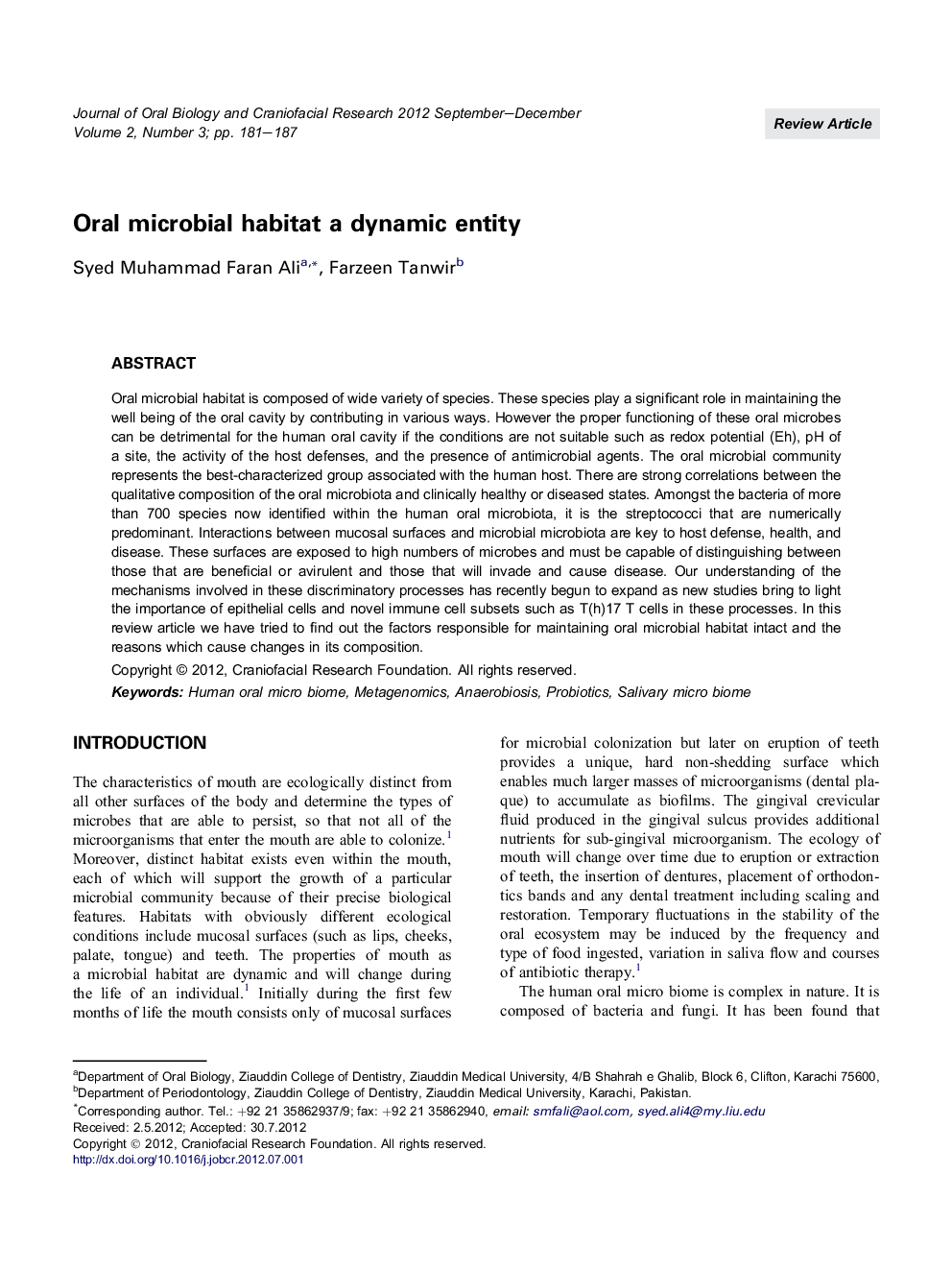| Article ID | Journal | Published Year | Pages | File Type |
|---|---|---|---|---|
| 3151983 | Journal of Oral Biology and Craniofacial Research | 2012 | 7 Pages |
Oral microbial habitat is composed of wide variety of species. These species play a significant role in maintaining the well being of the oral cavity by contributing in various ways. However the proper functioning of these oral microbes can be detrimental for the human oral cavity if the conditions are not suitable such as redox potential (Eh), pH of a site, the activity of the host defenses, and the presence of antimicrobial agents. The oral microbial community represents the best-characterized group associated with the human host. There are strong correlations between the qualitative composition of the oral microbiota and clinically healthy or diseased states. Amongst the bacteria of more than 700 species now identified within the human oral microbiota, it is the streptococci that are numerically predominant. Interactions between mucosal surfaces and microbial microbiota are key to host defense, health, and disease. These surfaces are exposed to high numbers of microbes and must be capable of distinguishing between those that are beneficial or avirulent and those that will invade and cause disease. Our understanding of the mechanisms involved in these discriminatory processes has recently begun to expand as new studies bring to light the importance of epithelial cells and novel immune cell subsets such as T(h)17 T cells in these processes. In this review article we have tried to find out the factors responsible for maintaining oral microbial habitat intact and the reasons which cause changes in its composition.
